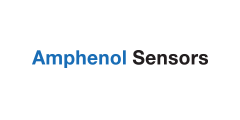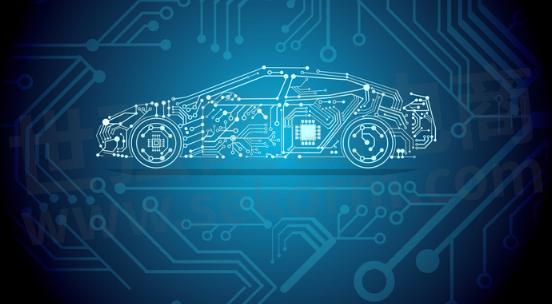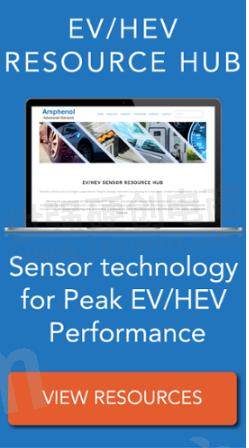Developing Optimized Sensors with Software for Electric Vehicles

Even the most basic electric vehicle sensors are sophisticated.
Traditionally, automotive engineers have relied on hardware to design and test electric vehicle sensors. However, with powerful software tools, it's now possible to do development work virtually to understand a sensor's performance long before it's put into a vehicle and used.

But syncing the virtual sensor with the actual hardware in a vehicle is often challenging and requires a high level of expertise. Advanced simulation and testing methods are necessary to ensure that the sensor performs as expected on the road or in the air, collecting accurate data and communicating effectively with other systems in the vehicle.
By combining the power of software with practical hardware testing, electric vehicle manufacturers can confidently bring the latest sensor technology to their vehicles, improving safety and performance for drivers.
THE PRINCIPLES OF SENSOR DESIGN
At a macro level, EV sensors are about quantifying and qualifying a specific metric. That data – be it measurements for heat, gas, pressure, or current – is critical for the vehicle’s systems and vehicle management system software to maintain the optimal performance or make a correction.
Ultimately, you can’t control or respond to what you can’t measure.
Designing accurate and robust sensors comes down to three key principles:
Understanding what the sensor is measuring
Understanding the sensor’s environment
Understanding a sensor’s capabilities
1. WHAT THE SENSOR IS MEASURING
Monitoring an EV’s systems requires absolute precision. Without being exact, it’s impossible to have an EV run consistently at peak performance or provide enough warning should something go wrong. A thorough understanding of the physical phenomenon being measured and how it affects the vehicle’s performance allows for pinpoint accuracy in sensor design.
Take thermal runaway, for instance. This battery thermal event has several signs – extreme heat, pressure, and gas venting. Understanding this event – from its early signs to when it’s in full effect – is an absolute for knowing what sensors are measuring what they should be designed to withstand.
2. THE SENSOR’S ENVIRONMENT
EV sensors don’t operate in a vacuum. Rather, they often operate in harsh conditions – be it extreme temperatures, high vibrations, or other external stressors – which can detrimentally affect their performance.
The environment an EV sensor is in can be just as important as the metric itself. Factors such as temperature, humidity, and vibration all impact a sensor’s performance. For example, a high-temperature environment can cause a sensor to malfunction or read inaccurately.
3. THE SENSOR’S CAPABILITIES
Not all sensors are created equal. Some have greater precision than others or are better suited for specific environments. Some sensors can self-diagnose, while others have a limited level of intelligence. It’s important to understand a sensor’s capabilities and limitations to determine if it’s the right fit for a particular application.
Without the proper functionality for the metric being measured and the sensor's environment, it’s impossible for a sensor to provide accurate and reliable data.
SOFTWARE FOR ELECTRIC VEHICLE SENSOR DESIGN & TESTING
Designing and implementing an EV sensor goes beyond simply creating a device that measures data. The sensor must also be able to transmit that information accurately and reliably to the vehicle’s software systems, where it can be analyzed and acted upon.
EVs are complex machines. As such, their sensors are complex devices.
Creating sensors that meet the rigors of application doesn't just happen. Even the most basic EV sensors require the highest level of careful and thoughtful design for a long and accurate useful life.
Software for electric vehicle sensor design is critical to this.
Without software, sensor design and testing would be a long and manual process that doesn’t allow for as much experimentation. The software allows for the quick iteration necessary to fine-tune sensor functionality, ultimately creating better-performing devices in less time.
For the purposes of sensor development, design and testing software are a series of algorithms that are simplified versions of reality. This includes simulated environments and dynamics to the digital twins of sensors that are tested.
Testing sensors under simulated environmental conditions, with the same software systems they will be integrated with, is crucial in ensuring their success in the real world.

Effective software for electric vehicle sensor design and testing looks at a variety of factors, including:
Dynamics of the environment
What’s the priority of to measure
The number of sensors needed for accurate measurement
Response times
Sensor tolerances
Outputs based on shifting baselines (e.g. temperature measurements in high-pressure environments)
Ultimately, these simulations are meant to push a sensor’s digital twin to its absolute limits. Information gathered from these simulations is critical for creating and refining the physical product, which will have real-world applications and implications.
Back to our thermal runaway example. When thermal runaway starts, one of the earliest warning signs of battery cell decomposition is gas venting. However, in an EV battery, there are certain gases to pay attention to. Through simulations, it's possible to see how a sensor reacts and at what point it starts to detect early indicators. It’s also possible to examine how temperatures inside the battery pack affect the sensor and its ability to take gas readings.
The data is also critical for programming EV computers and systems with algorithms that are robust and reactive. At a minimum, a sensor needs to be able to measure 10x faster than the event it's monitoring for. In the case of gas venting, that means detecting specific gases before they even reach a dangerous level.
Syncing sensors and software is a delicate balance between the physical capabilities of the sensor, the environmental conditions it will exist in, and how its data will be used and acted upon by EV systems. Done correctly, this process of syncing sensors with software for real-world applications is crucial for electric vehicles, as they rely on constantly gathering and analyzing data when in use.
SENSOR MANUFACTURERS, EV SENSOR SOFTWARE, & SENSOR DESIGN
The last thing anyone wants to be integrated into their EV design are sensors that simply aren’t up to real-world use or real-time monitoring. That’s why collaboration and partnership with sensor manufacturers, EV sensor software companies, and design firms are crucial for success in the EV market.
Working with your OEM sensor manufacturer, it’s important to be as upfront and detail-oriented as possible. Sensor manufacturers need to understand the specific needs and dynamics of the EV industry, as well as how their products will be used within it. This ensures their sensors can handle the unique challenges of application – such as high pressure and temperature conditions —- and expected performance.
At the same time, sensor manufacturers need to be upfront about their in-house capabilities for designing, creating, and testing EV sensors. This is important for two reasons:
Clients need to trust that the sensors will meet their needs.
Sensor manufacturers need to accurately estimate the time and resources necessary for a project. If they cannot design and test EV sensors in-house, they will need to outsource those tasks to another company – which adds time and cost to the project.
EV SENSOR DESIGN FOR OPTIMAL PERFORMANCE
Simulation-based engineering has come a long way and is now an important part of the design process for electric vehicles – sensors included.
With software for electric vehicle sensor design and simulations, it’s possible to verify performance and identify potential problems in real-world applications.
- +1 Like
- Add to Favorites
Recommend
- InvenSense Announces SensorStudio 2.3 Supporting Dataflow-Based Custom Sensors
- Mk20 Series of Cylindrical Reed Sensors, Ideal for Position and Limit Switches, Security, and Level Sensor Applications
- DS Sensors from Elastisense Sensor Technology Are Used to Monitor Longitudinal Expansion and Tilt/angel of The Bridge
- TT Electronics to Feature FlexSense™ and Industry-leading Optoelectronics Portfolio at Sensors Converge 2023
- TT Electronics to Showcase Comprehensive Portfolio of Sensors and Passive Components at Shanghai International Industrial Automation and Robot Exhibition
- TT Electronics to Feature FlexSense™ and Industry-leading Optoelectronics Sensors Portfolio at Sensors Converge 2022
- With FlexSense™ Patented Optical Sensor, TT Electronics Named a 2023 Best of Sensors Awards Finalist
- Bridge Monitoring Made Easy with IBridge Based on ElastiSense Two Sensors DS100
This document is provided by Sekorm Platform for VIP exclusive service. The copyright is owned by Sekorm. Without authorization, any medias, websites or individual are not allowed to reprint. When authorizing the reprint, the link of www.sekorm.com must be indicated.






























































































































































































































































































































































































































































































































































































































































































































































































































































































